How to send encrypted email on Android using OpenKeychain
Encryption is very important, especially when you send and receive email on the go. You never know if the free public WiFi connection in use is absolutely safe. Fortunately, you can minimize those risks by 'wrapping' your private emails in an encryption layer.
Today's article will show you how to encrypt email on Android using OpenKeychain. The best thing is that OpenKeychain is completely free. Using OpenKeychain for email encryption is quick, easy and effective.
Encrypt and decrypt email on Android using OpenKeychain
- What is encryption?
- Encrypt email with OpenKeychain
- Step 1: Download and install OpenKeychain
- Step 2: Configure OpenKeychain user accounts
- Step 3: Share the public key
- Step 4: Encrypt email first
- Decrypt email with OpenKeychain
What is encryption?
Encryption is the process of concealing or tampering with information. Encryption uses a complex algorithm called cryptography to turn ordinary data into a string of garbled and unreadable data. When users encrypt their data, no one can read that data until the data is decrypted with a special key.
Encryption is everywhere in modern digital life. Do you use WhatsApp? This application secures users' messages with end-to-end encryption. Are you logged into online banking? If so, you are using encryption. When you go to a friend's house, do you ask for WiFi password? That's how your friend encrypts and keeps data safe.
You can also use encryption to send email securely from your Android device.
OpenKeychain.org is an open source application that implements OpenPGP encryption standards on Android devices. OpenPGP is an open source version of the PGP encryption standard. Users will find it in hundreds, if not thousands of different applications.
Most modern encoders use asymmetric encryption. Asymmetric encryption uses a system of keys to protect user data.
You have a public key that anyone can know. Someone with this public key can encrypt the message then send it to you. Only you can open it because you have a private key. The private key is linked by password with the public key.
However, you cannot let anyone else know your private key. If not, they can fake your name, read your message, etc.
Encrypt email with OpenKeychain
OpenKeychain makes it easy to use OpenPGP encryption. The process will take place as the sequence below. The article will also show you how to decode an email. Here's how you set up OpenKeychain on your device.
Step 1: Download and install OpenKeychain
First, go to Google Play Store and download OpenKeychain.
Step 2: Configure OpenKeychain user accounts
Next, follow these steps to set up:
1. Launch the OpenKeychain application. The user will come to the initial setup screen. From here, select Create My Key .
2. Add the name you want to associate with the key. No need to use proper names. Next, add the email address you want to link to the key.
3. On the last page, create the key. Confirm your name and email address, uncheck the Publish on keyservers option , then select Create Key.
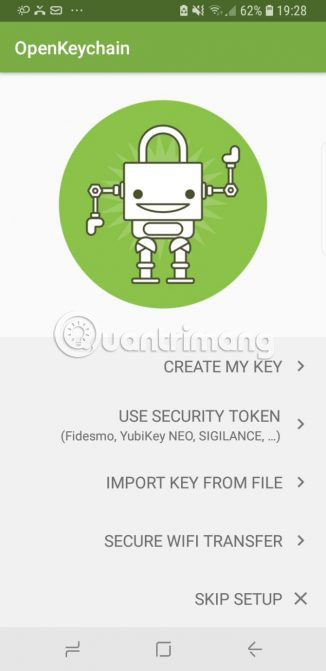
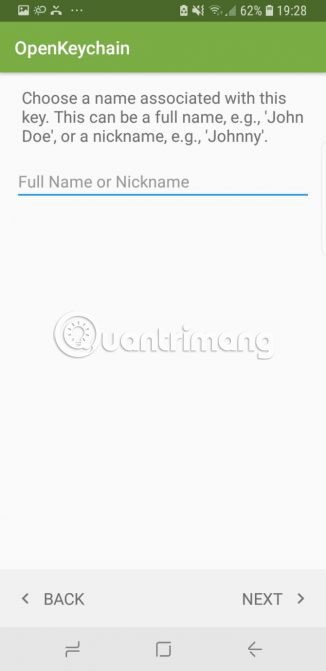
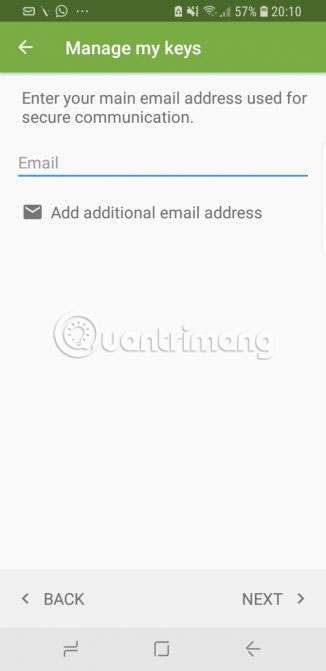
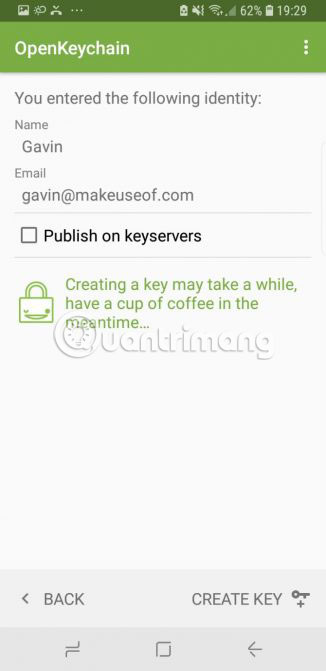
The application will indicate that key generation may take a while. However, often OpenKeychain creates encryption keys very quickly.
Now, users can view the key management section in the OpenKeychain user account. From here, users can share their keys with links or QR codes, encrypt and send files or email, export keys on keyserver and more.
Step 3: Share the public key
The next step is to share the public key with the recipient. If not, when you email them, they will not be able to decrypt it. There are several ways to share keys with OpenKeychain. Here are two easiest ways.
1. First, from the main account page, select the Settings menu icon (three dots) in the upper right corner, then select Advanced. Switch to the Share tab . Here, you will see QR codes that can be shared. If at the same location as the recipient, they can scan the QR code with their encryption application to automatically enter your key.
2. If they cannot scan the code or are not nearby, you can use the Android sharing function. On the same page, in the Key section , select Share with. You can now share your key with any option on your Android device.
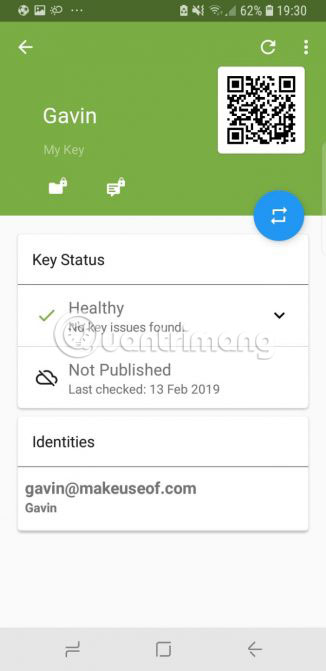
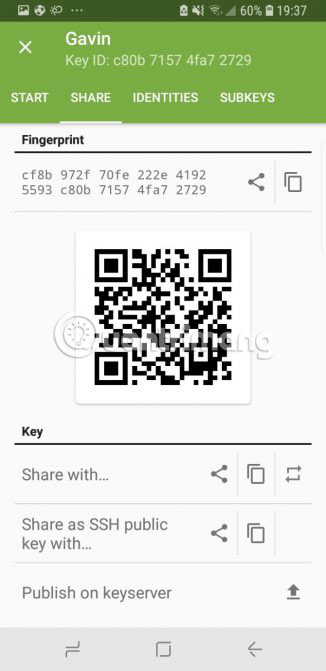
It is important for recipients to have OpenKeychain or alternative encryption key management application to enter your key. The recipient can enter the key into any compatible application, mobile device or desktop. For example, you can share the OpenKeychain public key with your own desktop computer, then enter the key into Gpg4win's Kleopatra certificate and key management program.
Step 4: Encrypt email first
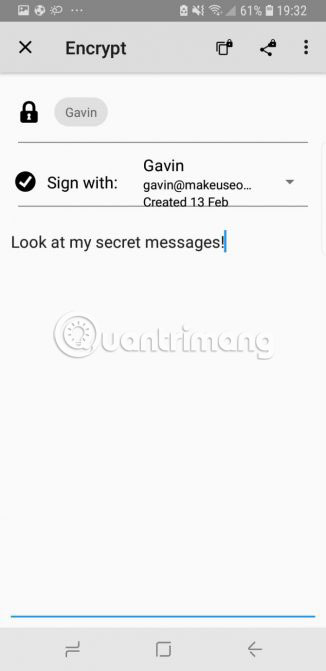
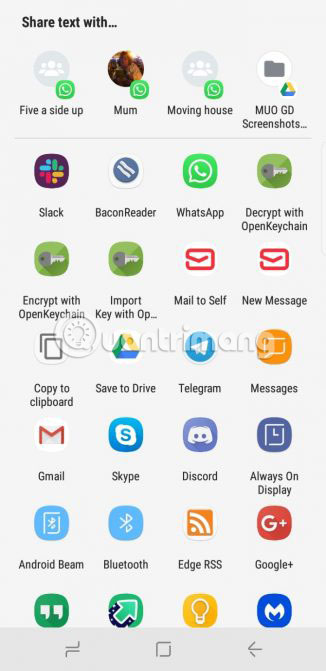
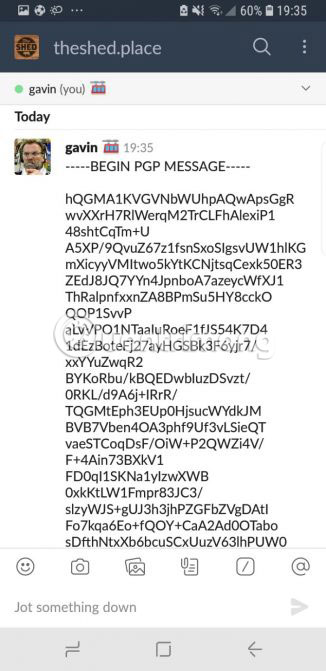
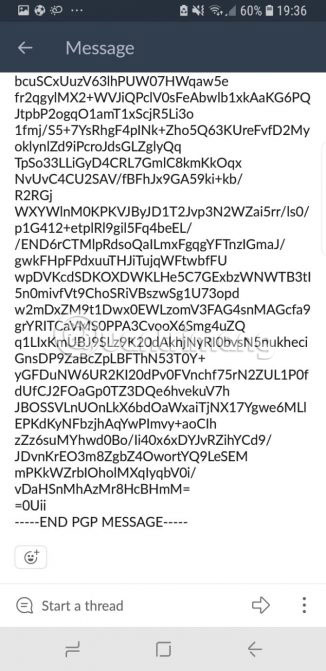
After the recipient enters the public key, you can start sending them secure emails.
On the OpenKeychain key identification page, the sender will find two icons below his name. One is folder icon with small padlock; the other is a message icon with a small padlock. The sender uses the first icon to encrypt the file and the second to encrypt the email.
Open the email screen and enter the content. When ready, use one of the two icons:
- Direct copy icon to copy and encrypt email content to paste into another application.
- Share icon to encrypt email content while sharing it into another application.
Both icons are located in the upper right corner of the screen.
Decrypt email with OpenKeychain
Readers already know how to send encrypted email. But what about when an encrypted email is sent to your inbox?
OpenKeychain makes it easy to decrypt emails. Highlight content of PGP email. Make sure you have selected the entire content. When the prompt appears, select Share> Decrypt with OpenKeychain . Email content immediately enters OpenKeychain. If the sender used your public key to encrypt the email, the email content will be displayed!
Hope you are succesful.
You should read it
- How to fix email out of sync on Android
- What is email encryption? Why does it play an important role in email security?
- Manage email on Android device
- How to read encrypted files, how to decrypt encrypted files
- The self-canceling email feature (Confidential Mode) has been officially updated for Gmail on Android
- Outlook may not encrypt your email if you use S / MIME encryption
- Learn about the ProtonMail email security application
- Microsoft blocks the bulk email response feature to 'save' businesses
May be interested
- How to Email Photos on Android Phone
 if you've added an email account to your android device, you can use it to send photos you just took with your android's camera. if you haven't added an email account to your device, you can do so in settings. once you've added an account, you can share photos from the photos or gallery apps, or attach files directly to the body of an email.
if you've added an email account to your android device, you can use it to send photos you just took with your android's camera. if you haven't added an email account to your device, you can do so in settings. once you've added an account, you can share photos from the photos or gallery apps, or attach files directly to the body of an email. - How to send bulk emails on Apple Mail
 one of the fastest ways for you to email a group on your iphone is to create a contact with an email group that you email regularly, such as a business exchange.
one of the fastest ways for you to email a group on your iphone is to create a contact with an email group that you email regularly, such as a business exchange. - How to Send Emails
 this article guides you on how to choose the right email service for yourself and create a personal account. once you have an email account, you can send messages to other people's email addresses.
this article guides you on how to choose the right email service for yourself and create a personal account. once you have an email account, you can send messages to other people's email addresses. - How to encrypt email
 if not encrypted, your email is at risk of being hacked and read at any time, or you may lose your account. this article will give you an overview of how to encrypt email, help you understand and choose the right encryption solution.
if not encrypted, your email is at risk of being hacked and read at any time, or you may lose your account. this article will give you an overview of how to encrypt email, help you understand and choose the right encryption solution. - One arrow hit two targets: Mozilla wants to share and want to encrypt the file
 mozilla has just launched a new service called send, which allows users to create encrypted copies of a file on the device, store it on a remote server and share it with a recipient. once shared, this encrypted data will also be deleted from the server.
mozilla has just launched a new service called send, which allows users to create encrypted copies of a file on the device, store it on a remote server and share it with a recipient. once shared, this encrypted data will also be deleted from the server. - Instructions on how to send and receive email with Gmail
 when you have successfully registered a gmail account, how to use send and receive it? the following article, tipsmake will guide you to read details on how to send and receive email offline!
when you have successfully registered a gmail account, how to use send and receive it? the following article, tipsmake will guide you to read details on how to send and receive email offline! - How to Send a Message to Your Phone via Email
 today's tipsmake will show you how to send an email from your computer to a phone number as a text message. you can do this by entering the recipient's phone number and carrier email code in the email service's 'to' text field and then composing the message. note: most carriers only support email messages consisting of up to 160 characters and do not support picture messages.
today's tipsmake will show you how to send an email from your computer to a phone number as a text message. you can do this by entering the recipient's phone number and carrier email code in the email service's 'to' text field and then composing the message. note: most carriers only support email messages consisting of up to 160 characters and do not support picture messages. - Manage email on Android device
 here are some tips and apps to help you more effectively manage email from your android phone whenever you have to leave the office.
here are some tips and apps to help you more effectively manage email from your android phone whenever you have to leave the office. - How to enable Gmail's Undo Send feature?
 you are worried when you press the button to send an email with many errors with gmail and are confused about how to summon it again like? rest assured because gmail has built-in email retrieval feature, this is an extremely useful feature if you misspelled someone's email.
you are worried when you press the button to send an email with many errors with gmail and are confused about how to summon it again like? rest assured because gmail has built-in email retrieval feature, this is an extremely useful feature if you misspelled someone's email. - 5 methods of emailing are completely anonymous
 there are many good reasons to send an anonymous email. there are free online services that allow you to send anonymous emails.
there are many good reasons to send an anonymous email. there are free online services that allow you to send anonymous emails.










 How to hide 'perforated' camera on Samsung Galaxy S10 series
How to hide 'perforated' camera on Samsung Galaxy S10 series How to use iMessage on Android with AirMessage and Mac
How to use iMessage on Android with AirMessage and Mac 8 best free Terminal Emulator apps for Android
8 best free Terminal Emulator apps for Android Tips to download games, Android applications do not support in Vietnam do not need VPN
Tips to download games, Android applications do not support in Vietnam do not need VPN Guide to combining Alreader and Text to Speech to listen to reading books on Android
Guide to combining Alreader and Text to Speech to listen to reading books on Android How to double download speed on Google Play
How to double download speed on Google Play